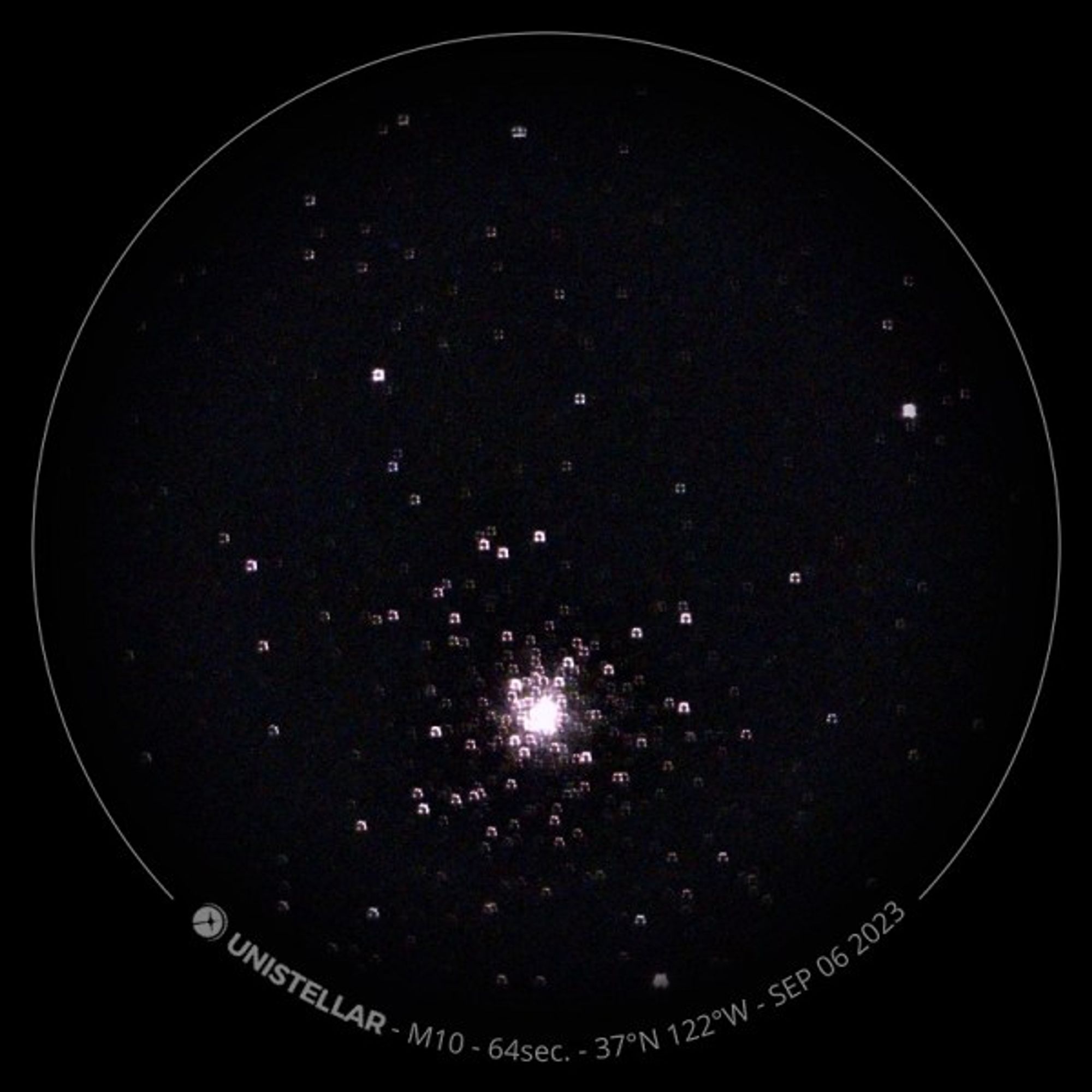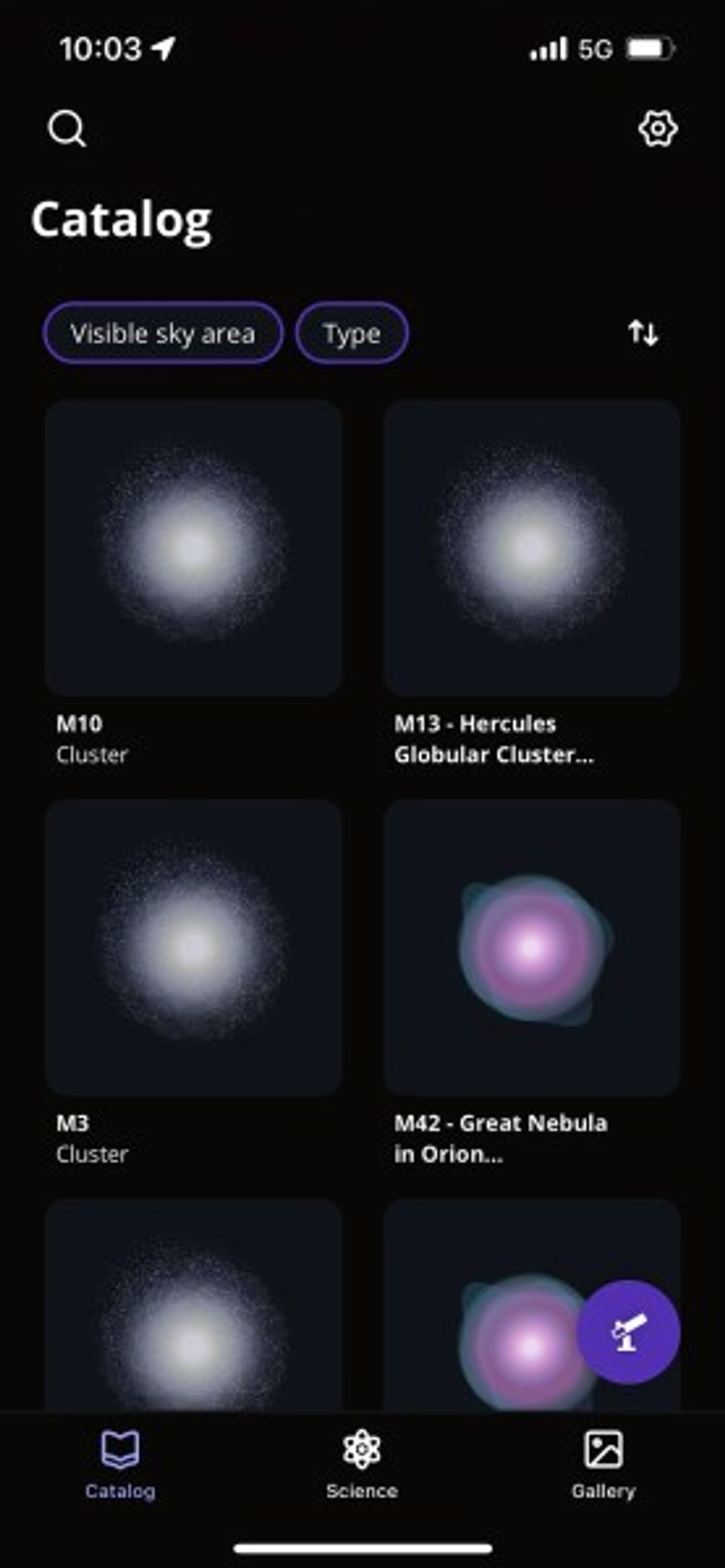
Unistellar's eQuinox 2 citizen science telescope.
We're thrilled to announce the return of GamesBeat Next, hosted in San Francisco this October, where we will explore the theme of "Playing the Edge." Apply to speak here and learn more about sponsorship opportunities here. At the event, we will also announce 25 top game startups as the 2024 Game Changers. Apply or nominate today!
It’s getting a lot easier to be a backyard astronomer. Citizen science has come to telescopes, and Unistellar enables us to look at the night sky with a powerful telescope and see galaxies, clusters of stars and nebulae even with tons of light pollution from the city.
Want must read news straight to your inbox?
Sign up for VB Daily
And machine learning and AI come in very handy in removing the light pollution from images so that you don’t have to go to a remote place to view some of the marvels of the night sky. This is one more example of how AI is changing everyday products and what we can do with them.
How human-centered design drives data-driven experiences In today’s competitive market
This is a modal window.
No compatible source was found for this media.
I verified this from my own backyard recently as I used Unistellar‘s eQuinox 2 telescope to view the night sky. Marseilles, France-based Unistellar makes this easy, as you connect your smartphone to the telescope and use the phone to control where it’s pointing and to see the images on your phone screen.
It isn’t cheap at $2,500, but the telescope is packed with a lot of technology that makes this casual viewing possible. The eQuinox 2 has a star database of 37 million stars, and it can see more than 5,000 celestial objects that include clusters of lots of stars. That’s a lot more powerful than just pointing your iPhone into the dark sky using an app like Night Sky.

A close-up of the eQuinox 2’s on button and tripod.
Normally, you need to get away from the city into a very dark place to be able to see a clear view of the heavens. I did this a time or two with my kid in Hawaii, driving onto dirt roads. But with eQuinox 2, Unistellar combined three cool technologies into one product.
It uses machine learning to get rid of the light pollution with what it calls Smart Light Pollution Reduction technology to reduce the blurriness of an image. It does so by removing the light from the background that shouldn’t be there, said Unistellar’s Franck Marchis, chief science officer, in an interview with VentureBeat.
It also pushes image processing to extend the range of the telescope with Enhanced Vision, which takes minutes of time to sharpen a picture so you can see the stars better. It also uses Autonomous Field Detection capabilities to figure out what it can see and where you are.
On your smartphone, it gives you a 6.2-megapixel image resolution and a wide field of view. It has a mirror diameter of 114 millimeters, an optical tube diameter of 144 millimeters, and a focal length of 450 millimeters. The tube itself is 549 millimeters. It’s kind of like carrying around a bazooka.
Putting on a show

Arcturus is 36.7 light-years from our sun.
You can use the telescope to put on a show for family and friends. The telescope is pretty hefty and it comes in a backpack. You have to set up the tripod first on a level piece of ground, and it comes with a built-in level where you have to put a bubble in a circle to make sure it’s completely level.
You also have to charge the telescope with a USB-C charger. Once you do, it can operate for 11 hours. Then you have to attach the scope to the tripod, using a couple of hand-turn screws. It’s a pretty quick process, considering what your alternatives are.
And before you get too excited, there is no little viewing tube that you look through to see the images. You connect your smartphone via WiFi directly to the telescope, and you see all the images on the smartphone or tablet. There are advantages to this. It’s easy to update the telescope, as it connects so easily to the internet via the smartphone.
And in the name of being social, you can connect up to 10 smart devices at a time to one telescope. So not just one person can see the images at the same time.

Not the ideal condition for looking at the night sky.
Back in May, I attended a viewing event with Unistellar’s Marchis in the peninsula near the San Francisco airport. We were in a hotel parking lot and there were some very high-powered streetlamps in the lot. As you can see from the picture, that wasn’t a great place to view the sky. One guy was so curious about seeing telescopes in a parking lot that he came over to ask us what we were doing.
The wind was also pretty heavy, but it was the only spot that night where the clouds weren’t blocking. Still, once the telescope wasn’t being battered by the wind, we got some pretty good images of a star cluster dubbed M3 as well as an individual star dubbed Arcturus.

The M3 star cluster is 33 light-years from Earth.
Arcturus is 36.7 light-years from our sun. It’s a red giant that is 7.1 billion years old. And the M3 (Messier 3) cluster of stars is 33.9 light-years from Earth and it’s 11.4 billion years ago.
Visible from a parking lot in the middle of a city in the Bay Area. Not bad.
The backyard show

The view of the M10 cluster from my backyard.
On one night, I set up the telescope and discovered that clouds were covering my view. So I had to reschedule and try again. I finally got around to doing it again and updated my app on the iPhone. My backyard fences were good at blocking the wind, as vibrations can mess up calibration. I set up the tripod earlier and didn’t have to redo that, so I was ready to go.
I pressed the on button and the light turned purple. Then it turned red to indicate it was ready to go. Next I opened the Unistellar app and the Wi-Fi connection worked fine.
Once that was done, I could tap on an icon of the telescope in the lower right corner of my iPhone screen. At that point, I was able to put my finger on a gray dot and drag it in different directions to make the telescope move in a circle or move up and down. I moved the telescope using my iPhone to an angle of 45 degrees. Then I had to use a wheel at the bottom of the telescope to focus the telescope. I also had to tap a button on the screen to start “orientation.” The motor takes over and repositions the scope as needed.

Unistellar tells you what you’re looking at in its catalog of viewable stars.
One of the great things about the telescope and its connection to the smartphone is that it knows exactly where it is on the planet. And then it can tell the user what should be viewable from that exact spot at particular times of the day.
Then you can zero in on particular stars or planets. You have to know the exact specs if you want to type in the numbers that will take you to a particular spot. Then, once the telescope is on target, you can tap the “enhanced vision” button to activate a more accurate mode. This mode layers multiple images capture by the telescope over time to create a sharper image of the object. That often takes a minute. So that means you can’t just move the object from star to star in real time.

A star cluster description.
You can also tap a filter dubbed “visible sky area” to view objects based on your location. There are a variety of objects that show up based on your area, but you can only tap on them if the right time has come for you to view them. When an object turns purple, you can tap on it. Then the motorized telescope goes into motion and goes to the spot that is programmed into it.
There’s a helpful description for you to read so you can understand what you’re looking at and how far away it is. I looked at the M13, or Hercules Globular Star Cluster. And the cluster of 300,000 stars was 22,000 light-years away from me. The stars were 12 billion years old. How’s that for making you feel small?
Citizen science

Unistellar shows you a catalog of what you can see from your location.
The company started in January 2017, and it did a Kickstarter campaign that raised $2.5 million in November 2017, said Marchis.
“That took us by surprise,” Marchis said. “The goal of Unistellar is not to design a telescope, but to bring the joy and interest in astronomy back. We want people to embrace astronomy and be part of the astronomical community. We want them to have this as part of their lives. It should not be complicated.”
The hope was to get the work done in eight months, but it took about two years to start delivering the telescopes, with the first model being the $4,899 eVscope 2. Then earlier this year, the company debuted the eQuinox 2.
Then it started delivering telescopes in 2019 and earlier this year it had dozens of people. Now there are thousands of Unistellar users around the globe, and they can participate in Unistellar’s Citizen Science Network. They can participate in joint missions such as the DART Planetary Defense Drill and NASA’s Lucy Mission to contribute their images directly to science.
Overall, it’s a pretty amazing experience to see another galaxy or cluster of stars from your backyard. It’s not quite like looking at images from the James Webb Space Telescope. But I highly recommend it.
GamesBeat's creed when covering the game industry is "where passion meets business." What does this mean? We want to tell you how the news matters to you -- not just as a decision-maker at a game studio, but also as a fan of games. Whether you read our articles, listen to our podcasts, or watch our videos, GamesBeat will help you learn about the industry and enjoy engaging with it. Discover our Briefings.
VentureBeat's Data and AI Insider's Event Join us for key insights and networking with leaders in the Data and AI spaces at VB's exclusive after hours event this November!